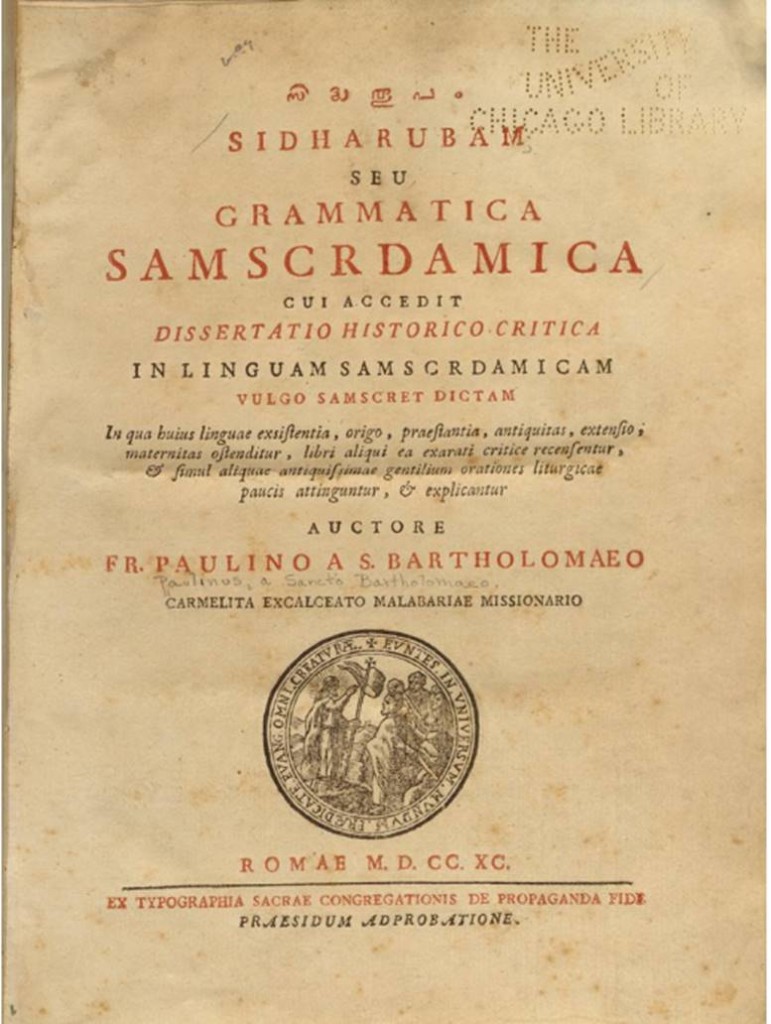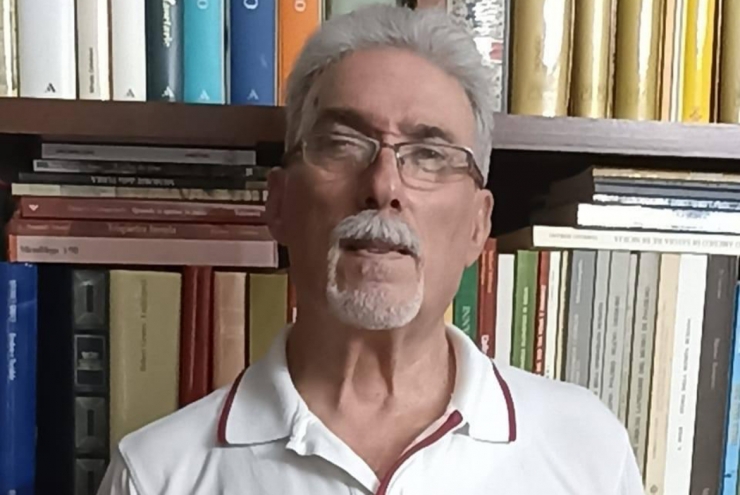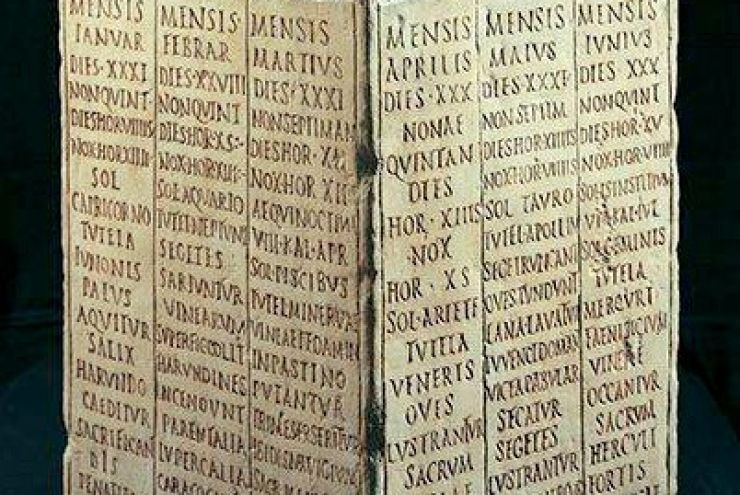The belonging of the Latins to the Indo-European lineage is undisputed. However, the identification of the original land of the Indo-Europeans is still open today. In the short history from the earliest linguistic theories to today, explanations have emerged which often, even if overcome by the same science that generated them, continue to have followers, as if they were a sort of absolute truth. In reality we are talking about a modern mythology, completely unknown in the ancient world and not belonging to the set of practices that make up the Roman Religion. A mythology that is also in stark contrast to the spirit of science that generated them, which does not bow to ideology but continues with theories to be confirmed or refuted following the right methodology.
With the illusion of provide some information, I am going to compile a short account of the theories that have enjoyed the greatest success in the short history of Indo-European research.
Outdated theories
The Indian theory
The first theory of Indo-European origin does not go back to Herodotus, nor to Titus Livius and not even to some unknown author of the late ancient world. In fact, only in the 19th century did linguistics become aware of the existence of a link between most European languages and some Asian languages. Then it was thought of the possibility that the related languages had evolved from the same stock or, in other words, that there existed in ancient times a single population and a homeland of origin, referred to by the German term “Urheimat“.

This revolutionary result of linguistics seemed to dictate the guidelines of archaeological research, to find evidence of this link, however the poor results were disappointing if compared to the enthusiastic expectations of the early days. In fact, archeology is generally unable to illuminate us on the ethnicity of the people who have left their traces. Linguistics, on the other hand, manages to define the origin of a word, a written text or toponymy, finding developmental links and ethnic relations, but cannot offer a link with the culture where the language was spoken and cannot provide a chronology.
Like any self-respecting discovery, even the Indo-European hypothesis was postulated thanks to small but significant preparatory steps. In 1790 Paulinus a Sancto Batholomaeo published the first Sanskrit grammar in a western language, that is in Latin, however the text was unclear.
The first truly useful work for scholars of the time was published in 1805 and helped to confirm some observations made by scholarly travelers who had noticed a certain affinity between Sanskrit, Latin and Greek since the 16th century. It should therefore come as no surprise that the first theory with some luck was that of the Sanskrit origin of the Indo-European languages. Just at that time the term Indo-European was coined, a term that we inherited, despite being its theory completely outdated, when the propagation of the Indo-European languages goes far beyond Indian and European polarity. This is the first example of a linguistic hypothesis dead and buried but still considered in some cultural environment an absolute indisputable truth: I happened to discuss with some Hindu guru who after almost 150 years advocates Sanskrit as the mother of all Indo-European languages and cultures. This was the first answer to linguistic questions: pansanskritism, which was in vogue in the mid-1800s. However, the scientific hypotheses are valid only until proven otherwise. And soon it was discovered the evidence that denied the possibility of Sanskrit primacy.
The Hittite turn
In 1834 Charles Textier discovered the remains of a very ancient ancient metropolis at today’s Boğaskale in Turkey. In 1880 Archibald Henry Sayce identified the people who lived there with the Hittim (Hittites), mentioned in the Hebrew scriptures, and it was later understood that the city was Ḫattuša, the capital of the kingdom of the Hittites. Written documents dating back to the twentieth BCE were revealed. The problem was deciphering the language. The Hittite was written in cuneiform characters, a writing system that had already been deciphered for Sumerian and Akkadian. Although the writing system was already known, decoding the hittite was difficult. Considering the antiquity of the finds, affinities were sought with the other Mesopotamian languages, but without success. The experts of cuneiform characters knew only Mesopotamian languages and did not have the tools of modern Indo-European linguistics. Furthermore, for a long time the possibility that it was an Indo-European language was not even considered, because the presence of Indo-European populations in the place earlier than the twelfth century BCE was excluded, that is, there was a gap of eight centuries, when the arrival of the Phrygian people was attested, via a migration through the Balkans. In 1915 a Czech Indo-European linguistic scholar, Bedřich Hrozný, accidentally studied the hittite and deciphered the first sentence using the comparison of other Indo-European languages known at the time, identifying the accusative ending –an (see Greek), the stem ad – / – eza to “eat” (see Latin edo) and vadar for “water” (see English water) by translating the ritual phrase “Now you will eat bread, then you will drink water”. The results of his studies were not well received, when they were published in 1917, but in the end they were recognized and it was understood that the Indo-European question was not resolved and Sanskrit as the origin of the original Indo-European language and India as Urheimat could be excluded.
Siberian theory, the land of the Aryas
The games therefore reopened. Recalling that Iranian is also an Indo-European language, the texts of Zoroastrianism, the Avestas were studied, and it was believed that the mentioned Airyanəm Vaējah, the plain of the Aryas, somewhere in northern Siberia, from which the Iranian people originated, was the Urheimat. Etymologically Iran derives from Arya. In the Persian language, Arya was the designation of all the dominant peoples of the Persian Empire.
Arctic theory
An Indian scholar, Bal Ganandar Tilak, reworking the geographical notions of the Vedas and the Avesta and the Bundahishn, placed the Airyanəm Vaējah in the Arctic Circle, based on the following text: “I, Ahura Mazdā, created as the first and best region, Airyanam Vaĕjō, or good creation. Then, Angra Mainyu, the destroyer, in opposition to it formed a large snake and the winter (or snow), creation of the Daevas. Over there, there are ten months of winter and two of summer.” It also described an era when the sun rose south and the stars did not rise nor set, but moved in circles. If we had to consider the description literally, this region would not exist: at the poles summer lasts six months, exactly like winter, and the sun can rise at any point on the horizon depending on the time of year, but if we interpret the ten months of winter simply as a “cold period” and above all we consider the circumpolar motion of the stars, then it is easy to accept the origin of the Aryas as the Arctic regions, or of the Scandinavian peninsula or of Russia.
Lithuanian theory
At the end of the nineteenth century some discoveries were made which proved the presence of cultures in Europe in very ancient times, and therefore the possibility of a European Urheimat was considered, with the propagation of the Indo-European peoples towards the south and east. In 1878 Th. Poesche, looking for arguments in favor of European origin, added the fact that Greek and Latin historians had often found that the Indo-European people with whom they had come into contact, mainly Celts and Germans, were blond. The skulls found in the archaeological excavations of the settlements of these peoples appear dolichocephalic. With his reasoning he came to affirm that the Baltic was the original cradle and the Lithuanian the original Indo-European language or in any case more similar to the origin. This too is a theory that continues to have a moderate success in certain circles, although it is no longer scientifically justified. In reality, the same error of pansanskritism was repeated conceptually, considering the land where the most archaic language was spoken as the land of origin. From here the Lithuanians imagined themselves as “pure” Indo-Europeans, compared to other more or less bastardized peoples.
The Aryan theory
Karl Penka followed the definition of Indo-European as dolichocephalic blond with blue eyes, but he noted that Lithuanians are brachycephalic rather than dolichocephalic, from which he deduced that they could not be true Aryans. The term “Aryan” was first introduced by Friedrich Max Müller in his work “Lessons on the science of language” of 1861 and began to be used as a synonym of original Indo-European. It goes without saying that in reality we have no idea what the ancient Indo-Europeans called themselves: the reconstruction of the term “Aryan” is based on a few questionable elements. Thus was born the modern Aryan mythology as a pure breed.
Today’s main theories
The Kurgan theory and the Yamna theory
Archeology has made enormous progress not only with new excavations, but also with new technologies. For example, the method of dating with Carbon 14, which earned the nobel prize to its inventor Willard Frank Libby, allowed to accurately date the archaeological finds of organic origin. Genetics, which developed only in the second half of the last century, opened new perspectives on relations between peoples. Linguistics itself has been enriched with new ideas, adding other languages to the Indo-European family and advancing on the mechanism of languages differentiation, the dialectology.
Before going back to Urheimat’s question, let’s review the points generally accepted by all scholars. Imagining the Indo-European family not as a tree, but as a swollen river that divides into various arms and canals, an Anatolian branch is identified, to which belonged the Hittites, the Luwians, the Lycians, and others, which became autonomous around the fourth millennium BCE. Another branch, slightly less ancient, is the Indo-Iranian one. Armenian, Phrygian and Greek are thought to derive from a common Indo-European factor of the third millennium BCE. For the other Indo-European families, the picture becomes more complex: as far as we are concerned, there is a certain closeness between Celtic and Italian languages such as Latin.
By studying the vocabulary of Indo-European languages, you will find words such as: beech, deer, elk, salmon, wolf and dog. This would indicate an origin between the Elbe and the Danube, the Volga and the Ural Mountains.
Based on new knowledge, the Lithuanian archaeologist Marija Gimbutas identified the place of the culture of the Kurgans as the Urheimat, from where the Indo-European population emigrated in several waves. The Kurgans appeared in the fifth millennium BCE in an arc like region north of the area between the Black Sea and the Caspian Sea. David Anthony, making a research on the domestication of horses and the presence of wagons, postponed the first Indo-European testimonies to Yamna culture, in the 3500s, in the same area. This group of theories sees the Indo-Europeans as warriors and conquerors who subdued Europe by erasing the previous cultures.
The autochthonous theory
In 1987, archaeologist Renfrew systematically questioned the model proposed by Gimbutas, considering the evidences of the spreading of agriculture from the Middle East to Europe in the Neolithic with a slow process that began in the seventh millennium, supported also by a geneticist like Cavalli Sforza. The work of the two archaeologists Otte (1994, 1995), and Häusler (1998) and the Italian linguist Mario Alinei (1997, 2000a), independently, has brought to light a new explanation of archaeological, genetic and linguistic data, according to the which the Indo-Europeans would not have come to Europe following an invasion by the Caucasian steppes, but would be heirs of the indigenous European populations, those which dated back to the original arrival of Homo Sapiens in Europe in the Middle Paleolithic. As a consequence, the first Neolithic growers from western Asia would instead be non-Indo-European, and their linguistic contribution would have been the introduction of non-Indo-European influences on indigenous Indo-European languages. The Spanish linguist Francisco Villar instead sustains a slow Indo-European invasion with assimilation of the substratum of the Neolithic populations (hypothesis described in my previous article: “the Attitude of the Indo European Latins: they assimilated the Italic traditions”)..
Conclusion
An overview of the various theories on the origin of our people was presented. It is a fascinating theme that takes us back to the mists of time, the dawn of civilization. There is still no certain answer, but the passion with which archaeologists and linguists try to discover fragments of this ancestral mosaic is simply wonderful. It is exciting and encouraging to see the enormous progress since the early theories at the dawn of Indo-European linguistics. The hope remains to discover new finds and invent new technologies that can help us understand something more about our past.
Mario Basile
scripsit ad XI·K·IVN·MMDCCLXXIII

















